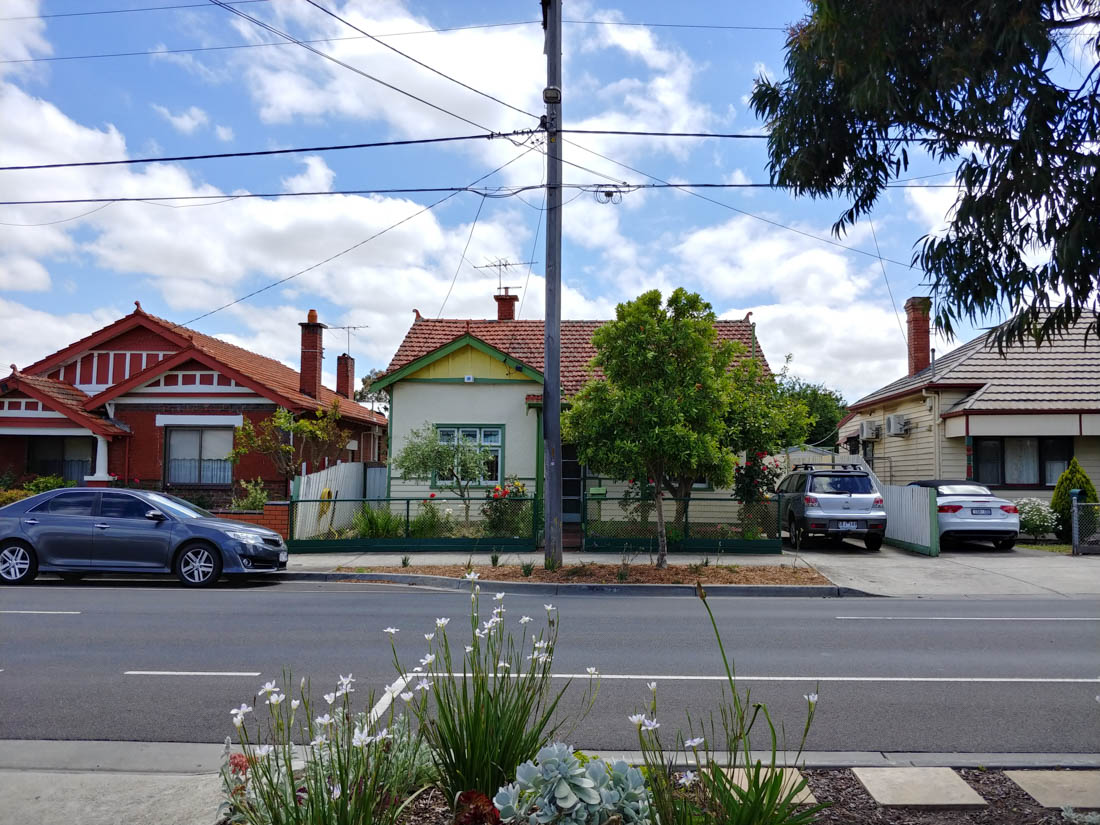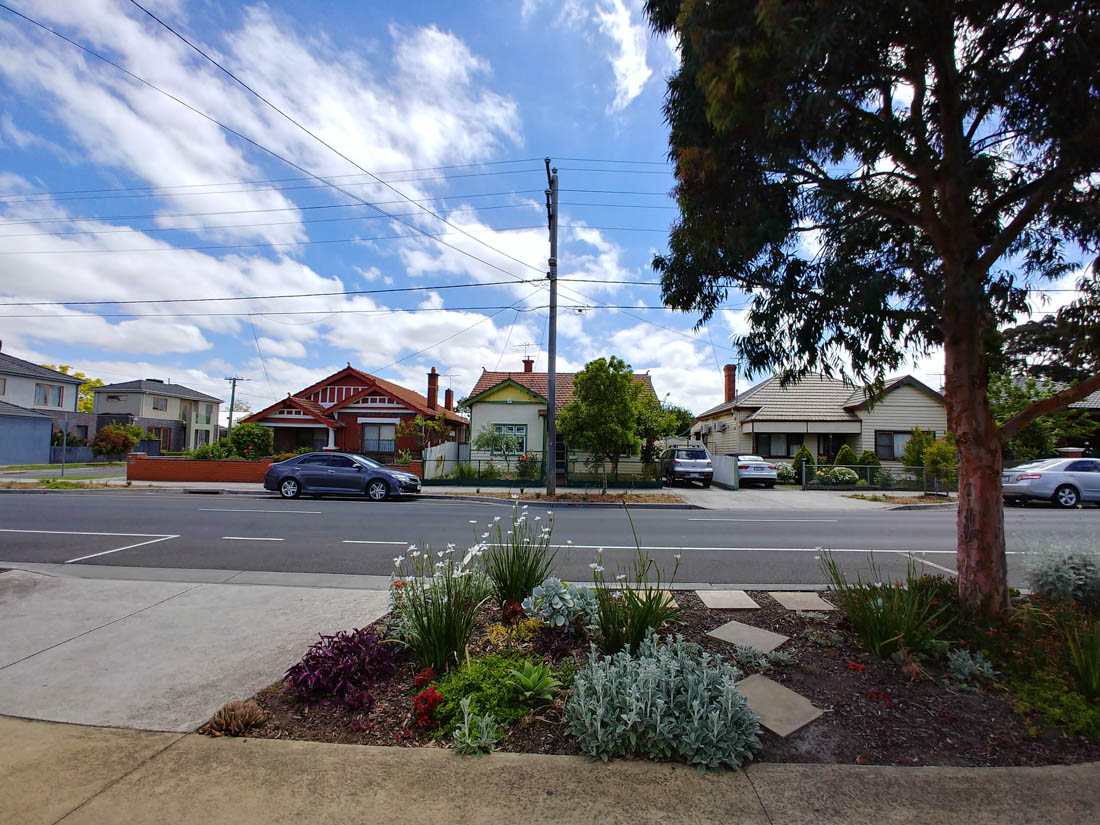Camera
The V30 uses the same basic camera design as the LG G6: a primary standard-angle camera, paired with a wide-angle secondary camera. The 35mm-equivalent focal lengths of each camera are approximately 30mm and 13mm respectively, so that wide-angle camera is very wide by smartphone and even DSLR standards.
Shot taken on the standard 16-megapixel camera
The primary camera features a small hardware upgrade over the G6, moving from a 13-megapixel sensor with an f/1.8 lens to a 16-megapixel sensor with an f/1.6 lens. The pixel size is similar (now 1.0µm, down from 1.1µm) though the resolution increase brings the V30 back to where the G5 debuted. Laser autofocus also returns, which was omitted from the G6, while OIS remains. One of my criticisms of the G6 camera was the weaker main camera hardware relative to the G5, but LG has rectified this concern with the V30.
Shot taken with the 13-megapixel wide-angle camera from the same position
The wide-angle camera sticks with the G6's 13-megapixel sensor with 1.0µm pixels, but the lens aperture is now much wider, at f/1.9 compared to f/2.4. There's still no autofocus or OIS in the wide-angle camera, but these features aren't as necessary with such a wide field of view. The front camera appears identical to the G6: 5-megapixel sensor with 1.1µm pixels plus an f/2.2 lens. This is fairly weak selfie camera hardware for a flagship phone, though the field of view of this camera is wider than normal.
As for video capabilities? You'll get up to 4K 30fps from either of the rear cameras, plus slow motion capabilities up to 120 fps at 720p. Audio is recorded at 24-bit/192kHz, and it's pretty darn good quality.
The biggest omission here from a hardware perspective is a sensor with large pixels, though LG has attempted to compensate for this through wide-aperture lenses. Many competing handsets, such as the Google Pixel 2 XL, opt for a 12-megapixel sensor with larger 1.4µm pixels, allowing better light capture in low-light situations. The Pixel 2 XL also has dual-pixel tech for extremely fast autofocus; the V30 is pretty fast thanks to its laser autofocus assembly, but not quite as fast as the Pixel 2 or Galaxy S8 that have dual-pixel sensors.
The good news, though, is the V30 has an excellent camera in general. Whether you're using it outdoors, indoors or in low-light situations, the V30 nails the exposure, tone and colors of the scene. Images are suitably bright, even in weaker lighting, while color saturation is fantastic throughout basically every photo I captured. In the trickiest conditions, the V30 doesn't always nail it, but for the most part you'll get great photos in any condition.
This quality is maintained whether you use the standard or wide-angle cameras. Color performance between each sensor is basically identical, and while the 13-megapixel wide-angle camera doesn't capture as much detail as the 16-megapixel main shooter, it still captures enough that photos look good. The only main downside to the wide-angle camera is it's not as good in low-light situations, due to its lack of OIS and less wide lens, though it outperforms the LG G6's wide angle camera in these conditions.
Having used both zoom and wide-angle secondary cameras on smartphones, I find the wide-angle camera more useful. Most 2x zoom smartphone cameras only provide a small increase in detail relative to a cropped or digitally zoomed shot with the main camera. LG's wide-angle camera, though, is fantastic for landscape photos that tend to feel a bit too cramped using standard smartphone cameras. It allows you to capture an expansive scene without having to stand too far back; a feature that comes in handy more often than you might think.
LG has also worked to reduce the fish-eye effect with their wide-angle camera. There is far less of this effect than with the original LG G5 camera, and while it's not completely removed, fish-eye reduction makes the wide-angle camera more usable.
The V30's camera app implements auto-HDR in all the correct conditions, leading to photos with excellent dynamic range. There's a bit of shutter lag when capturing HDR images - again it's not as fast as the Pixel 2 - but results are stunning. Photos are deep, full of contrast, and perfectly saturated. Shadows are rarely crushed and highlights rarely blown out; it's an excellent implementation.
My only major concern with image quality is carried over from past LG handsets, and that's aggressive noise reduction. While images are basically devoid of grain, this comes at the expense of fine detail. Images tend to have the dreaded oil-painting effect when viewing 100% crops. In other words, edges of detailed objects like trees and leaves can look a bit smudged rather than sharp and crisp, which leads to less detail overall in these areas. You won't notice when viewing downscaled images, but it's more apparent the more you zoom in.
Low light performance is good, but not quite as good as the Pixel 2. That said, the Pixel 2 camera is outstanding and is superior to the V30 in general. Don't worry, though, as the V30 is still highly competitive and produces great photos.
The selfie camera on the V30 is pretty disappointing, however. It's not very good in low light situations, and photos it takes are way too soft, leading to a complete lack of fine detail. I expect better from a high-end smartphone; those that really value selfie quality will have to look elsewhere.
LG's camera app is absolutely packed with features, headlined by an excellent manual mode with controls over basically every aspect of the camera. There's even a manual mode for video capture with similar controls, so those who want the best video capture experience with controls for ISO, white balance and so forth, the V30 might be what you're after.
Aside from the manual mode, there's a bunch of other modes including multi-shot modes that use multiple cameras, a dedicated food mode, support for both slow mo and time lapse videos, as well as a cool cine mode for impressive video recording.










